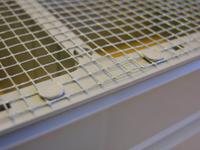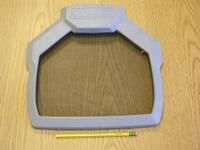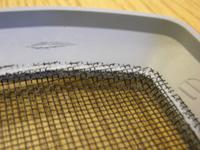Attaching Metal Grilles and Screens to Plastic Frames
For many years, metal grilles and screens have been attached to plastic housings and frames using additional fasteners. These fasteners may be screws, clips, rivets, hot-melt glue or adhesive. Each of these processes costs money, requires inventory and can be subject to fluctuating degrees of consistency in quality.
The advent of the heat staking or swaging process has enabled many manufacturers to design (or redesign) their products. This can typically be done with minimal expense to new or existing injection molding tools. In many cases, the final product, when staked or swaged, becomes much stronger and robust than its predecessor that required hardware for attachment.
Besides the reduction in product cost by eliminating hardware, there are many advantages for why switching to staking/swaging is such a benefit to many products. Listed below are just a few.
• Rattles from loose fasteners become non-existent.
• Screens or Grilles do not become loose over time.
• Products become tamper proof.
• Production rates increase with smaller workforce.


As shown in the images above, a heavy duty, construction grade screen is heat staked onto a plastic vent housing. The housing has 16 heat stake posts equally spaced around the perimeter. A machine operator locates the housing into a part holding nest, and then places a precut screen over the surface with posts. Upon initiating the machine cycle, the parts become an assembly within 10 seconds.


As shown in these next images, a black painted grille is swaged into the rib of a plastic engine frame. The process of “swaging” is basically embedding the metal grille directly into the plastic. This process is much more difficult than straight forward heat staking as shown in the previous images. In this application, the heat stake iron (tooling) must remain only a few degrees below the plastics actual melting point. Any point over will produce a stringy mess. With quality tooling and equipment, the iron temperature can be closely maintained to repeat this assembly with ease. Thermal Press International employs machine controls with precise tooling to make assemblies such as this routine.
Many other screen materials such as nylon, felt and fabric can be easily staked as well. To discuss your application and whether heat staking/swaging is a viable option for you, please Contact Us or call (925) 454-9800 to speak with a Thermal Press engineer.